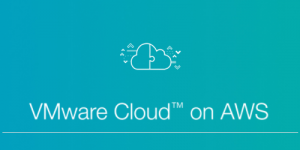AWS Partner Network (APN) Blog
Best Practices for Virtualizing Oracle RAC with VMware Cloud on AWS
By Bryan Wood, Partner Solutions Architect at AWS
 With the launch of the VMware Cloud on AWS, many Business Critical Application workloads that were previously difficult to deploy in the cloud no longer require significant platform modifications.
With the launch of the VMware Cloud on AWS, many Business Critical Application workloads that were previously difficult to deploy in the cloud no longer require significant platform modifications.
VMware Cloud on AWS brings VMware’s Software-Defined Data Center (SDDC) to the Amazon Web Services (AWS) Cloud. It is delivered, sold, and supported by VMware as an on-demand, scalable cloud service that removes barriers to cloud migration and portability, increases IT efficiency, and opens up new opportunities to leverage a hybrid cloud environment. The service is available in the AWS US West (Oregon), US East (N. Virginia), and London Regions.
A recent post on the VMware blog describes a Better Together demonstration that AWS and VMware co-presented at VMworld 2017 using an Oracle RAC database. Enterprises using Oracle RAC now have a seamless transition path to cloud with VMware Cloud on AWS. We chose Oracle RAC for this demonstration for its reliable, high-availability client connection failover supporting a Django-Python application running on native AWS.
See the full architecture on the VMware Blog >>
Benefits of VMware Cloud on AWS
VMware Cloud on AWS affords many Better Together opportunities to streamline operational processes by leveraging native AWS services. The service enables a cloud-first IT transformation without needing to disruptively re-platform your enterprise Business Critical Application workloads.
The cloud-based SDDC cluster deployment in our demonstration is simply another data center that is cluster managed the same way you manage on-premises VMware environments, without needing to retool or retrain staff.
Creating and expanding SDDC clusters can be accomplished in minutes, allowing you to drive utilization to a much higher efficiency without concern for 18- to 24-month capacity planning cycles that must be budgeted for peak usage. Release burst capacity immediately after it’s no longer needed without any CAPEX overhead, as well as the OPEX overhead of running your own data centers.